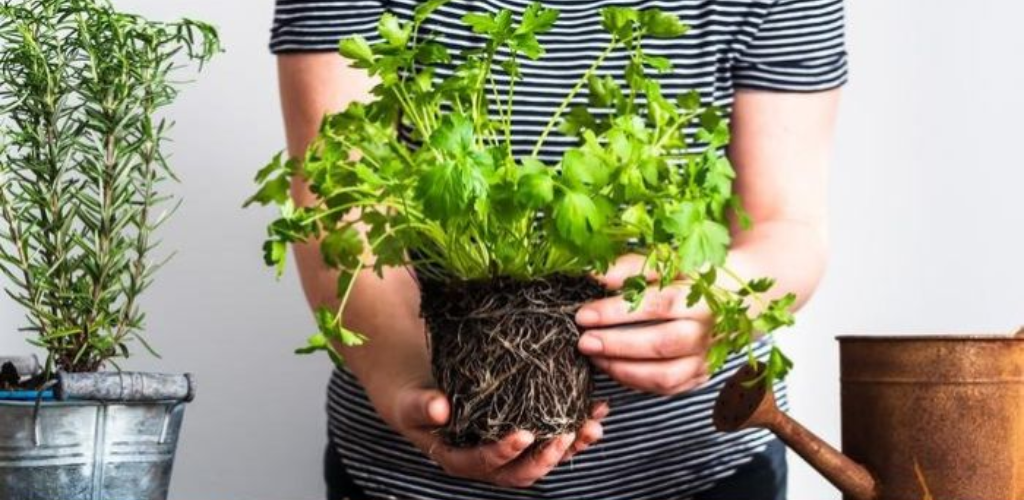How to Grow Parsley
Parsley (Umbelliferae) is a versatile herb. Parsley is incorporated into many dishes from very different cuisines. Similar to what salt does to a dish, parsley ties the flavors of a meal together. From an omelet to a salad to a grilled steak, parsley adds a bright, uplifting note to almost any dish.
Aside from its delicacy, parsley is a powerhouse of nutrients. Did you know that parsley actually contains more vitamin C than an orange? Try adding several leaves and stems to your fruit juices.
Is Parsley a Perennial or Annual?
So far in this herb gardening series, we’ve only talked about perennials, plants that come back every year, and annuals that die back after one season. Parsley is different because it’s a biennial. This less common classification means that the plant lasts only two gardening seasons, long enough to produce leaves, make its seeds, and develop a significant taproot.
As a biennial, a parsley plant offers delicious leaves in its first year and will produce its seeds in its second year. Parsley also offers an often-overlooked advantage in this latter year: its taproot is edible. In fact, the parsley root is the spiciest and most flavorful part of the plant.
Which variety of parsley to grow in your garden?
Parsley is closely related to dill, carrots, and celery. The resemblance is pretty clear. There are two main types of parsley you’ll find: flat-leaf (Neapolitan) or curly (P. crispum). Many cooks choose to grow flat-leaf parsley for its more vibrant flavor and ease of cutting. Curly parsley is just as delicious, but it also provides a striking edible display in a garden.
How to plant parsley
Where: Like many of the herbs we’ve talked about, parsley also does well in a container. If you plant parsley indoors, keep the pot near a warm, sunny window. If you grow roses in your garden, plant parsley around your roses. Let’s say you’re going to harvest more fragrant flowers. I like to plant parsley in my containers, along with my tomatoes, where they make excellent companions.
When: While parsley is an easy plant to grow from seed, germination can be a slower process than other herbs. Sow seeds directly into the garden soil, three to four weeks before the last frost. For quick germination, soak parsley seeds overnight before sowing. I like to start my parsley seeds indoors, 2-3 months before the last frost, to get a head start and have larger plants to start the growing season.
How to Grow Parsley
Soil: Plant parsley in moist, soft, well-turned soil. Add rich compost at the beginning of the growing season.
Sun: Parsley likes full sun environments. If you’re planting parsley indoors, be sure to grow it near a sunny window.
Water: Although parsley grows best in moist soil, it is relatively drought tolerant. Parsley is fairly adaptable to all types of climates.
Side Planting: Plant parsley next to tomatoes, corn, and asparagus. If you have roses in your garden, planting parsley nearby increases the health and scent of your roses.
parsley rootsHow to harvest parsley and what to eat
The harvest cycle for parsley is a little different, as it is biennial. In the first year, parsley is harvested for its leaves, choosing the stems furthest from the center of the plant. Leave the inner stems and leaves, so the plant can continue to grow. In the second year, the leaves will be sparse and may be less intense in flavor. You can use them, but you can also let the parsley flower. Bees love the flowers. Collect seeds to sow the following spring.
In the fall of this second year, harvest the parsley root. This is actually the tastiest part of the entire plant! One particular cultivar of parsley, Hamburg parsley, is known for having the tastiest root.
Don’t throw these stems away! Did you know that parsley stems are more powerful in their flavor than its leaves? So next time you grill a steak or make a parsley-based sauce, add the stems for exceptional texture and flavor.
